Art and Mental Health Link Love
A digest of this week's things I loved on Substack that I wanted to say a little bit more about ...
Each week, I want to share with you some of the things from other Substack writers that get me thinking. My niche is the relationship between art and mental health, with a focus on trying to understand how various mental health symptoms impact artistic process, productivity, medium, content, self-perception and reception by others. (And I believe that all of us are artists and all face mental health challenges to varying degrees.)
As I share these links, I’ll share the thoughts I personally had related to my niche. Please note that this doesn’t ever mean that it’s what the original author intended … just that I was inspired by their writing, want to give you my own thoughts from my personal lens, and hope that you’ll enjoy checking out their original pieces as much as I do.
Housekeeping Reminders:
Starting this week I launched a new weekly post that’s a roundup similar to this one except that it’s entirely about the really smart things people are sharing about writing. It includes tips and leads but mostly it will be just lots of inspiration. I’m inspired by people here and I want to elevate and promote that. I’m excited to share this work. But this is all taking a lot of work and time. So I’ll keep this art and mental health weekly roundup free but the new writing one is for paying subscribers. You’ll find those posts in the “Thoughts on Writing” tab on the homepage. The first one is free to help you see if you might like it!
Thoughts on Writing: A Substack Digest
This is my Thoughts on Writing weekly digest, where I curate the best writing about writing on Substack, highlight connections between some of the pieces, elaborate on topics related to my niche or my own experience, and hopefully help you find new writing that educates, inspires and empowers you in your own work.
Other Housekeeping Reminders:
I’ve created my Table of Contents where you can see all of my post types and the posts available in each one.
I’ve made it so that you can opt out of the types of posts here that you don’t want email notifications for. Learn more here.
PLEASE HELP ME MEET MY GOAL:
My goal is to find 1000 people who are interested in subscribing to this work at a rate of $100 per year. This shows the world that we as creatives believe artists and writers can and should earn six figures. I practice artistic tithing, meaning that at least 10% of my income automatically goes to support other artists, writers, makers, creatives, performers, etc. So if I meet my goal, we keep at least $10000 of that right in the creative community. I also make every effort to continuously encourage, support, share and promote the work of others.
$100 per year feels like a lot. But it works out to less than $2 per week.
If this is something that you believe in, I really need the support of paid subscriptions to be able to keep doing this work that I’m deeply committed to. In fact, I believe in this work so much that I’ve self-funded a year of full-time work here using a business loan. If I don’t reach the above goal by Summer 2024, I may have to revisit things.
From the past week or so then …
Is anyone else jumping for joy that is joining Substack with her Letters of Love?!?
She says, in her introduction to what her letters of love are …
“Self-loathing is a rampant virus in our contemporary culture — so prevalent as to have become the default setting in most of our minds. Seldom do we even stop to question whether it is normal or healthy to live within a consciousness that is constantly attacking, judging, and insulting itself. But to condemn yourself as unlovable is to swallow a terrible lie. And to believe that you must earn love through perfectionism, or that you must seek love from others in order to become whole, turns all of us into hungry beggars. I believe there is an ocean of warm, affectionate, and outrageously unconditional love available to us all — and that it is conveniently accessible from within. I don’t believe anyone is excluded from this ocean of love; it is only a question of learning how to hear it, how to feel it, how to trust it.”
This is true for anyone and particularly common among people with most mental health challenges, especially on the depression spectrum. I am super excited to explore how these love letters could be a creative antidote!
Don’t Miss: Learning more about her Letters of Love practice on Sunday in a special event for paid subscribers of
—-------------------------------------------
Creative Spark #4 by of
stopped me in my tracks and really got me thinking. This is an article about the relationship between neurodivergence and creativity. It addresses two key points - why it seems like many neurodivergent people are also creatives and some ways that typical creative advice doesn’t apply to many neurodivergent artists. This aligns so well with what I explore in all of my work which is not just who creativity helps and heals us but WHY are we persistent in creating when it’s not all positive and also how do the specific challenges of various mental health conditions impact creative process, content, etc. I would quote the whole piece here but of course you can just go read it yourself if this resonates with you. The part I want to share here today is:
“Neurodivergence involves, by definition, experiencing the world differently. A neurodivergent brain is one that processes information in a way that is outside the range expected by our society. As neurodivergent people, we’re seeing life in ways the neurotypicals aren’t, and we’re often able to express that in distinctive ways. Because society doesn’t give us space to fully express ourselves in the way it does for neurotypicals, we often have to find creative outlets to free the thoughts that are ricocheting around the insides of our heads. And since society is not often particularly kind to neurodivergent people (or anything that deviates from its supposed “norms”), and is rarely effective in identifying or supporting neurodivergent people, many of us end up struggling with our mental health. Emotional pain is fertile ground for creativity, because it needs to be worked through and channeled outwards, and artistic tools are ideal for this.”
People often ask me what I have discovered in my research about the link between art and mental health and most often what I say is that it’s complicated which is why I’m committed to a long-term/lifelong exploration of writing and sharing about this. One of the things that comes up that I never really know how to address is “why are so many artists also people with mental health issues?” I struggle with answering this succinctly for a few reasons:
I’m not sure I agree with the premise of it at all.
I believe that we are all artists with mental health experiences existing on a spectrum.
Even if we accept the premise on its face, the experiences of both artists and people with mental health challenges are so diverse that one answer isn’t going to suffice.
But I really think Allegra has touched on such a key thing here. Historically and into contemporary times (although I hope, hope, hope it’s shifting) there has been one accepted path for education and career, one that reflects a neurotypical cis white male way of viewing and interacting with the world. People who view the world any other way have had a hard time gaining success within the traditional Western system. (Example: women who value communication and collaboration over competition haven’t traditionally thrived well in these systems and have either not been promoted, have been challenged into specific “soft science” careers, or have been seen as bitchy bosses. That’s a simplification but hopefully illustrates the point.) So if neurodivergent individuals / people with mental health differences are not able to thrive within that system, then they must find other ways to express themselves and art has long been a way to do that.
So much more I want to think about in regards to this!! Thoughts? Share them:
—-------------------------------------------
of in Garbage From The Gurus
Explores the origin of the phrase that “what doesn’t kill you makes you stronger” and questions the truth of the statement:
“Often, after tough times, I feel weak and vulnerable. The incidents that led to my developing PTSD caused me 20 years of weakness and pain. If I was supposed to get stronger, I was doing something wrong.
It can be a relief that this phrase doesn’t always apply. What doesn’t kill you can make you traumatized. You don’t have to be strong all the time. You can feel sorrow about something without forcing yourself to grow. Sometimes, things are terrible, and it’s okay not to have a life-defining moment from them.”
I really appreciate this frame from the creative point of view. There persists among some artists the idea that their suffering and struggling is what makes them their creative selves and that it’s all good for the art. That might be true… but Leon explains that psychology seems to indicate that you may find yourself stronger after hardship despite the hardship, not because of it. And research indicates that many artists find that after letting go of the fear of recovery - whether that’s beginning to take medication or stopping self-medicating with substances or any other number of things - and moving into a better emotional space, that’s when creativity really thrives.
Sometimes it’s tempting to turn every hard thing that happens into art. And that can have a lot of value as a cathartic process. But sometimes it’s best to just focus on other forms of self-care and getting to a better place. And that’s okay too.
RELATED: of in “Tiny Bubbles” for Anxious People
responded directly to Leon’s post with his own thoughts:
“Roughly ten years ago, in my mid-forties, I had my first real Panic Attack. It broke me. I have spent the last ten years healing. It has not made me stronger unless you define "stronger" as "better understanding your weaknesses," which I would accept as a solid argument. As a teacher, I know that sometimes the most competent students are the ones who "know what they do not know," which would support understanding your weaknesses as a form of strength.”
RELATED: From Hope is The Lifeline that Connects Us by of
“While it's true that maintaining a positive perspective can be transformative, we must acknowledge that we're not immune to our own struggles. The journey towards optimism is seldom linear; it's marked by setbacks and moments of vulnerability.
Attempting to see the silver lining doesn't mean turning a blind eye to the very real challenges we face on a daily basis. Despite our efforts, life can repeatedly cast us into the shadows. It's not a matter of lacking the ability to recognize the better aspects of life, but rather the recognition that navigating difficulties isn't as straightforward as a mere change in mindset.”
Winston argues in this piece that as writers we do have a duty to maintain a thread of hope for our readers. It’s an interesting argument and one that I’m still sitting with, as I’m not sure quite where I land on it. But I thought it provided an interesting slant on what Leon had said; not quite the same and also not quite a counterpoint.
RELATED: From Ten Things, Part Five by of
“And sometimes I’ll ask what people have recently—say in the last day or two—come to realize they love, a question that at first seems to be difficult for some of them, as they say, “I like” this, or “I like” that, to which I try to lean on them by saying, “No, no, I said, what do you love?” Because sharing what we love is dangerous, it is vulnerable, it is like baring your neck, or your belly, and it reveals that, in some ways, we are all commonly tender.”
This excerpt from Ross Gay has had me thinking about how often we associate vulnerability with hard stuff, when for many of us, it is perhaps even more so experienced with letting in the good, with admitting what we cherish, with showing our loves and obsessions and interests out loud, declaring ourselves in some small way. I’m thinking about how I can find more comfort, or embrace the discomfort, in sharing what I love without wincing so much, without wondering what someone will think, without feeling like it’s a step too far. It also has me considering these words from Samantha Irby, this radical reclamation of owning our loves and our likes and our interests, regardless of how it’s received — and what an act of self-assuredness it is to do so.
RELATED: of Shared in Warm Bodies, Flushed Cheeks, and Beating Hearts:
To write this book I need to deal with my own trauma responses and to deeply prioritise that. Sometimes, to write something new, you have to become the person who can write it.
I will start by making time to rest, time to wander and flow. To prioritise that like my life depends on it. To tend to my nervous system. To tolerate and move through intrusive thoughts, and floods of images. To see the deep and gentle power of erotic possibilities.
which speaks to how sometimes we write from the trauma and sometimes we write about the trauma and sometimes our job is to heal the trauma so that we can write beyond it.
of invited artist Lena Wolff to share more about Unlocking the Mystery of Color:
and she started by saying:
“Color is endlessly fascinating, weird, complex and mesmerizing. Even long-time artists and designers who work color for a living can feel both challenged and excited by it at the same time. My goal in teaching color theory is to share simple exercises – a hands-on approach – to build confidence around using color through prompts that are the visual equivalent of what musicians do when practicing chords and scales.”
I appreciate this mention about confidence. In exploring the ways in which mental health symptoms impact creative process, I have often found that our art suffers when our confidence suffers, which can be a direct result of living with a mental health condition. Depression is notorious for eroding self-esteem and it’s hardly the only condition that does so. I think that going back to the basics of learning color theory or practicing musical scales can actually be super helpful because it creates a muscle memory, a foundation that you can rely on, a pattern to return to even when you don’t feel confident in your creative work.
RELATED: From Celebrating 6 months on Substack by of :
“I like to think our words can be magic even if they’re written for our eyes only, the poetry is so often in the process. Over time what’s happened is that the confidence I’ve regained around my writing has begun to spill over into my life: I feel better in myself as a result of having a voice here. That definitely feels like magic to me.”
of shared in Notelets on Nuture:
“One of my biggest takeaways from The Artist’s Way has been a commitment to having weekly ‘artist dates’. When I was feeling more ambitious, I might visit a museum or make a vision board. I even tried my hand at experimenting with watercolours and improving my calligraphy skills. But at the moment, I’m leaning into simple walks in nature with a playlist or a podcast, where I notice the trees, the leaves, the breeze. We're spoilt here in the Scottish Borders, and carving out space for that one small thing each day has made all the difference to how I feel when I return home. It brings me comfort like nothing else.”
I have practiced The Artist’s Way off and on for decades, including the core elements of the morning pages, the artist’s dates and the daily walks (which came in later books by the author). I have always found the artist’s dates hardest to keep, and I have never quite been able to articulate why. It’s something I actually think about quite a lot.
RELATED: of shared The Artist Of My Life
which is a celebration of how Adele’s music has resonated, validated, helped her through various stages of life.
“I’m wearing my boyfriend’s black H&M hoodie. It’s pulled up over my face to hide my tears. He is away in Australia having ‘life experiences’. I miss him and his smell and his skin so much it’s a constant background hum. My tummy and organs ache in swirled-up confusion and sadness. This is grief, my first real experience of it. Not that anyone at home has used that sort of word or really spoken about what’s happened.
One person really is here for me right now. She is adept at helping me feel what I need to feel. She is right here in my ears. Her name is Adele.
I have recently discovered her album, 19. I am 19. I’ve got these songs on repeat on my mp3 player as I lean my head against the bus window and watch fields go by. Her voice, that resonant voice, wraps me up like the protective arms I so need. She feels the pain, just like I do.”
I share this as related to The Artist’s Way because it’s a reminder that when we think about art as therapy, it’s usually through the concept of making art for our own cathartic process, but there’s also therapeutic value in experiencing art whether or not we’re making it ourselves at any particular given moment. Listening to the right music or seeing the right film or reading the right book at the right time can provide a mirror, a best friend, a sense of not being alone, insight to move forward, so many things …
RELATED: How Bruce Springsteen and 18,000 Strangers Helped Me Mourn My Mom, a Today piece by Sharon Waters that I found in the Memoir Monday roundup by :
“I was never one of those Springsteen fans who went to many shows of a tour, hopping planes and tallying my concert count. But at my first show of this tour, five months after my mom died, I discovered a rock concert with 18,000 strangers was more therapeutic for my grief than a counselor’s couch. And not any ol’ concert, but seeing Springsteen and the E Street Band, the top thing I pined to do during the pandemic.”
RELATED: From Tsundoku and Coping with Loneliness by Lonely Robot Theme
“The act of reading can also serve as a form of solace for those experiencing loneliness. Books can be companions that provide intellectual stimulation, emotional resonance, and a sense of shared experience. Reading about characters navigating their own challenges and triumphs can offer readers a perspective that resonates with their own lives, potentially alleviating feelings of isolation.”
of shares Weird Music: The Expansive and Personal
“John Vogel’s surreal music starts up, equal parts inviting and plaintive. As it drifts along, the composition interweaves with voices that float in and out. One of them is Drew Daniel’s of Matmos, saying: “Sometimes the things art does to us say a lot more about our inner life emotionally than about what’s in the art. The art is empty and we’re pouring stuff into it. Then we think, ‘Oh all this stuff is in there.’ But it’s not. It’s in you.”
That’s the experience and epiphany that John Vogel’s passion project, Weird Music, brings to the proverbial table. That table is, of course, art, and the project is a solid reflection of its duality; its expansiveness and its personal-ness.”
And I’m curious and excited to learn more from the podcast episodes to follow. Our individual mental health/ human experience is all tied up in our collective experience and so art is both a reflection of the artist’s experience and a reflection of the time/place of the artist and then it’s also interpreted through the potentially completely different lens of the viewer/reader/listener.
RELATED: From of in Pep Talk:
“Whatever happens to your work when you send it into the world, with its sometimes treacherous landscapes, is none of your business, really. You made the thing, and now people can make up their own minds about it. Will everyone love it? Probably not. Will everyone hate it? Also, probably not.”
of wrote On a Precipice
about leaving a part-time job in favor of full creativity:
“I began feeling the most creative parts of myself close down to everything else I had previously been going after, and opening up to build someone else’s dream. …
But by saying yes to that role, I was saying no to myself. Initially, I thought I could manage both, but as time went on, all it did was dilute my creativity and exhaust my spirit.”
This includes a lot of smart thoughts and advice, a favorite for me is:
“Accept that you can’t go back: We’re constantly evolving. What is ‘known’ to you now is not going to catapult you forward, it will only hold you back. But what is ‘unknown’ to you holds the key to unlocking your most creative work yet.”
I love that. Your most creative work yet might be right around that unknown corner. When I’ve been creatively blocked and/or mentally unwell, sometimes the only thing that kept me going was curiosity about what’s on my own next page.
RELATED: From Growing Through Grief and Gratitude by of :
“A profound realization over the past few years has been releasing the idea that I have to fight to find my way back when I'm lost or unsure. Daily, I'm exploring what it means to leave room in my life for the unknown, the wonder that greets me, and the grief, too.”
RELATED: From of in Planning My Writing Projects In Line With My Goals:
“For the first time, perhaps ever, I’ve taken my time with planning my creative projects this month. Many times over the years I would see another creative working on a particular project and immediately be drawn to it - pulled forward as though hypnotised by the imagined potential.
I’d start my own version of the project, often inputting money and a great deal of time into it, only for a few weeks or a couple of months to go by, before realising I’d done the wrong thing. I’d taken the wrong path, I’d followed someone else’s creative dream and not my own. I call this chasing the shiny.”
RELATED: From Importing Importance by of
“I think the trick is to go deep inside yourself and separate out what the mimesis crowd calls "thin desires" (imported from others) from "thick desires" (found within yourself). Those "thick desires" are the ones, for the most part, that truly are of consequence to you. For me, many of those thick desires can usually be summed up with the word CREATE. Many of the other "important" things I import from the world conspire to distract me from that one thick desire. And, as I outlined in Life is in The Water, creating requires spending more time swimming in the waters of life and less time importing "important" ideas from the world.”
In , Sarah Fay shares You Find a Place:
which discusses the role of place and the surroundings around us in mental health healing and recovery.
As the psychologist and mental health innovator Patricia Deegan, who fully healed from schizophrenia, says, “Stop asking what’s wrong with people with mental disorders and instead ask, ‘How do we create hope-filled, humanized environments in which people can grow and fulfill their human potential?’”
She shares some of the key things that enhance a space for healing, and immediately I found myself thinking about Van Gogh’s paintings in the asylum. Here’s an excerpt from the introduction of my book The Artist’s Mind:
His artwork represents times in his life of both relative wellness and relative “insanity.” On the one hand, he created magical works of art depicting nature; his flowers, wheat fields, trees, and seascapes continue to inspire the imagination of viewers today. But he also endeavored to paint what he saw, and not all of his life was spent soaking in the beauty of the sunbaked meadows of Southern France. For instance, he spent one terrible year of his life in the Saint-Paul de Mausole asylum. His impression of the empty, seemingly-endless hallways of the institution are represented in the decidedly bleaker work Corridor in the Asylum.
In addition to this painting, we also have letters that give us a wealth of insight into his creativity and state of mind. In fact, one of the many diagnoses attributed to him posthumously is hypergraphia, a compulsion to write prolifically, which can be a symptom of both mania and epilepsy. His letters from this year indicate that life at the asylum was anything but pleasant. He wrote of his experience, “One continually hears shouts and terrible howls as of animals in a menagerie.” The terrifying sounds must have echoed horribly in that empty corridor. One patient he shared space with had auditory hallucinations and van Gogh wrote that he seemed to be responding aloud to sounds in the corridor that no one else could hear, which must have been haunting.
For the most part, van Gogh did all that he could to paint the more pleasing landscapes he remembered from his life before the institution. Whenever possible, he would sit in the asylum’s gardens, painting what he saw there instead of the dull and dreary interior. This endeavor arguably resulted in some of his best work, including Starry Night.
My mind drifted to Van Gogh in the garden of the asylum but then I came back to Sarah’s piece, and she goes on to talk about asylums as well:
“The “cure” for mental illness had everything to do with where the patients were housed. The architect, physician, and mental-health advocate Thomas StoryKirkbride designed asylums that offered patients fresh air, beauty, privacy, and comfort. The center structures of his buildings proudly faced out, and the wings let in fresh air and natural light. They housed museums, libraries, and workshops. Patients had their own rooms, which had twelve-foot ceilings. They sometimes tended the lush grounds themselves. Mental hospitals, Kirkbride said, should impress the patients and inspire faith in the psychiatric profession.”
There’s interesting history here and Sarah shares more of it along with thoughts on place. Worth reading the whole thing.
Sarah also shared a great interview this week with Cameron Cage, “whose tribal Tsimshian name is Kshdelm ‘Ol, Fights the Bear” and I really appreciate it because while Sarah emphasizes recovery and doesn’t identify with diagnosis, she is very open to differing viewpoints on this big topic as evidenced here.
RELATED: of shared Dreaming up room for creativity
which is literally about creating a room, a studio, etc. and includes this:
“I often give my students an assignment to write about their dream studio. I give them prompts to help them think about the kind of space that they would most like to work in. I ask them to picture the location, whether it’s an urban studio, near the beach, or out in the country. Do they see a large, industrial space or an intimate space no bigger than their desktop? They consider what tools are available in this space and the materials they would use... etc.
All this to begin visualizing the work they would most like to make. It’s really a question of what kind of an artist do you want to be.
The studio is, after all, a reflection of the artist and the work that comes out of that space, is a product of that environment.”
I extra loved the creativity of from in My Creative Process is Slow
in which she shares a video/art/textile project related to cutting the tags off of clothes:
“Clothing tags are a sensory trigger for both myself and my son. Due to neurological differences in sensory modulation clothing tags can contribute to sensory overload. Removing tags is an act of care to prevent overstimulation and related meltdowns.”
As I read things, I’m always asking how it reflects the way that mental health/ neurodiversity impacts creative process, content, medium, productivity, self-perception and business. I want to dig deeper into how sensory issues impact creative work in these areas.
—-------------------------------------------
shared Let life-altering things be life-altering
which is a vulnerable, special post about her current experiences living with a brain tumor. Among many poignant things, she shares what helps her cope …
“I try to read my previous writing. Partly because it boosts my confidence and reminds me how much I love writing, partly because I find it soothing to have words that describe a little bit of how I’m feeling or say exactly what I need to hear which, a lot of the time, is what I aim to write. It feels like a hug from past me. Holding onto the small things when the big things are unbearable is one I love to re-read, yet I sometimes can’t because…well I’m unsure why. Maybe because the small things become unbearable or unreachable at times, too.”
This resonates although of course my own health stuff is very different. In times of illness, overwhelm, grief, the intensity of being a human, we must keep trying to find the things that will help us. If we can’t create, we can look back at our creative past or take in the creativity of others. Sometimes that helps. And sometimes it still won’t help but we try. <3
Feeling generous and wanting to make someone else feel special?
of shared My Dream Is Not a Baby
and it stood out to me because I just shared a few days ago a great post by Marion Piper of The Creative Urge called I am with book that a lot of people resonated with and is the exact opposite of what Anna is saying. And I believe that we are capable of holding two opposing thoughts together so although Marion’s words resonated with me, so do Anna’s.
“A few people have already called this new project of mine a “baby”. Someone even referred to the early stage of developing my ideas around it as a “birthing process”. These comments leave me curious. By choice I am unmarried and child-free, and yet the low-hanging fruit of our language makes it innocent, almost benign, to try and make a mother out of me. It’s as if to suggest that a woman’s dreams always lead to motherhood, and if they don’t, perhaps her chosen path can be bent or distorted towards it somehow.”
I think what this speaks to is how astoundingly powerful language is and also how it is limited/limiting. It’s like when I say that my best friend is “family” but my relationship with him is so different from my relationship with my siblings or parents that it doesn’t exactly convey what I’m trying to say. Come to think of it, it doesn’t convey it at all, even though it’s a convenient shorthand for what I’m trying to express about it most of the time.
shares David Hockney wants us to see differently
And explores how seeing the artist’s work got her thinking about ways to step a little outside her own creative comfort zone:
“In my own practice, I find it can be easy to get stuck in a rut and focus only on what I know, or on the thing that might be expected of me. If I’m not sure what to make I don’t really play around. I grab a small canvas and make a new oil painting. But what I am feeling after seeing this show is by cutting off other options of art making I am limiting myself. It’s not that Hockney isn’t a painter, it’s just that he approaches his ideas in a lot of ways before settling back into painting each time.”
In Creative Bytes #129, of
addresses some “inherent contradictions that many artists grapple with” and gives us some great food for thought there. Eric also reminds us:
“For artists caught in this whirlwind of emotions, it's essential to remember that marketplace success doesn't overshadow the intrinsic value of their work. Success is multifaceted, and its definition varies. It could mean commercial success for some, peer recognition for others, or simply personal satisfaction. The key is for each artist to define what success means to them and find their unique balance in the vast spectrum of art and commerce.”
I think this is especially true for artists with certain mental health challenges because it’s often easy to get pulled away from our centers, have symptoms get triggered, and lose sight of why we’re doing this work in the first place. It’s complicated and layered but figuring out what success means for yourself and focusing on that and continuing to come back to it can be a helpful part of the process. And as much as I get annoyed by SMART goals, I do think there’s some value in asking yourself not just what success means in the big emotional overarching picture but also what some small, measurable forms of success might be since coming back to that can help a lot when you’re getting lost in the weeds of it all. For example, one of my signs of success is that my work is reaching and resonating with other artists with mental health challenges and to stay focused on that I keep a “brag book” of emails, comments, notes etc. that reflect that so I can look back and go “oh yeah, I’m doing what success means to me, so stuff it Inner Critic.”
RELATED: By Helen Redfern as she reads The Success Myth by :
“Can I just state, for the record, that I actually have a fear of success? I don’t want to be a celebrity, I don’t want to go viral, and I don’t want paps rummaging through my dustbins or being written about on online gossip sites. So I’m hoping that, by reading this book and redefining success, my fears might be reduced significantly, so I can press forward with my goals.”
RELATED: From Small Wins by of
“It's important to recognize that every step counts on our journey towards our goals whatever they may be. Just like a sculptor chips away bit by bit to create a masterpiece, every small achievement is a chisel that shapes our path to success.
So, let's embrace the little victories – the book finished, the dishes cleaned, the closet organized. These are the building blocks of our accomplishments. And remember, every win, whether monumental or minuscule, deserves recognition and celebration. After all, a win is a win, no matter its size.”
RELATED: From the Power of Small by Tasmina Perry of
“Small means manageable.
It means you’re much more likely to finish – not just start a project.
Finishing a project means satisfaction and fires up the motivation to do it all over again.
Even when you start small, there’s value in staying that way. …
So what’s your circus wagon? Your small. Is it writing a short poem once a week so that by new year you’ll have a slim volume of verse? Is it making a dozen pots of jam you can sell on your street, is it booking a stall at a local Christmas fair and making enough jewellery or graphic art prints to fill a metre-squared table.
Small means getting started. Let’s get ready to fly.”
Share one of your recent small wins so we can celebrate with you:
SHORT SHARES:
Just a few more things that touched my heart and mind so I thought they were important to share with you this week:
of shared what we tell and what we hide
which is a great piece on the ownership of narrative, giving ourselves permission to write our version of the truth, and her experience doing that at a recent writer’s retreat.
“How could she say this? Did she really mean it? She did, because she had crafted a narrative about it, and the truth — my truth — and the facts behind it run contrary to the story that she had fashioned for herself and to which she clung, and that has, over time, been embedded in her memory. Her version of the narrative, is, according to her, the right one, the only one, and she believes this with every fiber of her being. There is a whiff of innate, arrogant narcissism embedded in story ownership, and we — every last one of us — fall prey to it as writers and art-makers.”
in The People Are The Art
delighted me with her description, especially as I just started a new graduate degree at an art school and felt so excited just to be amongst artists all day again:
“Beautiful people, this art world space that reaffirms my faith in human nature, that there are so many who’d flock on a Wednesday afternoon to see these paintings, to care to walk slowly, to take it all in, try and understand, drink it. A woman with flame hair, red out of a tube like the paint, and her friend small and mouse do you want to go to the roof for a sneaky glass of wine to talk about it? as they paused in the doorway, the show almost done. A young, floppy curls Adonis and his mythical lover, arms about shoulders, slim hips, photographed in front of a large pastel curly flower by his sister perhaps, his proud mother, a sculptural face, a headscarf, smiling at her shoulder. A woman with talking-point glasses, orange and thick-rimmed. A boy with dragons etched into his jeans. Colourful trainers and psychedelic skirts over jeans. A blonde moustache on a young man’s face worn with awareness and John Lennon glasses. Head-turning elegance in a woman all in white, pink boots.”
From Alex Elle of Gratitude Journal in Writing, Micro-Moments and Paying Attention:
“In the tapestry of life, gratitude is the golden thread that weaves through our experiences, binding them with a luminous glow and reminding us to honor our light. Gratitude practice has taught me so much about noticing, paying attention, and being in awe about the tiny things. It's this reminder to see the sunbeam amidst the storm or smell the fragrance of rain-soaked earth after a downpour. As we journey through our lives, the practice of gratitude journaling can become our compass, guiding us toward mindfulness, joy, and an unwavering connection to the present moment.”
If you haven’t seen it, Alex is one of the teachers/speakers at an upcoming writer’s retreat called A Writing Room, which has both online and in Santa Fe attendance options. I’ll be joining virtually and am excited that in addition to Alex, we’ll hear from Julia Cameron (of the aforementioned Artist’s Way), SARK, Anne Lamott and more.
My Writing From The Week
Behind The Scenes of The Artist's Mind: The Creative Lives and Mental Health of Famous Artists
I had so much fun throughout the month taking my book, The Artist’s Mind, on a virtual book tour. I loved getting the chance to share some behind-the-scenes stuff about the book including parts that got edited out but are still so good. This rounds it all up.
Thanks to the folks who helped with the final stops on the tour this week:
- of shared more thoughts on the book
- of shared a chapter review on Yayoi Kusama
- of wrapped it all up with a book review
Also thanks to:
- of who shared more thoughts stemming in part from our conversations about art and mental health
- of for linking to the interview with me again in the post on The Past and Future of Wolf
Musings and Memories on Art, Education and Mental Health at 43, 33, 23 …
I just started a second Masters degree in Visual and Critical Studies and had such a wonderful time at our orientation - not because it was great per se but because it really gave me the opportunity to appreciate where I am today as a 43-year-old returning student. It sparked a look back at my own twisting and turning journey in not just education but in terms of creativity and mental health.

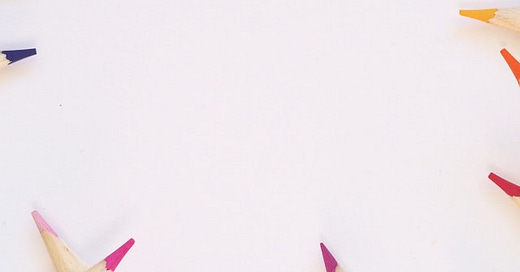




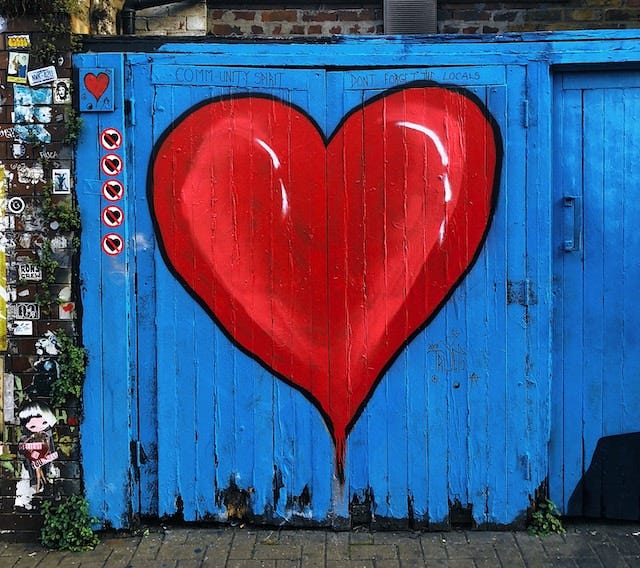
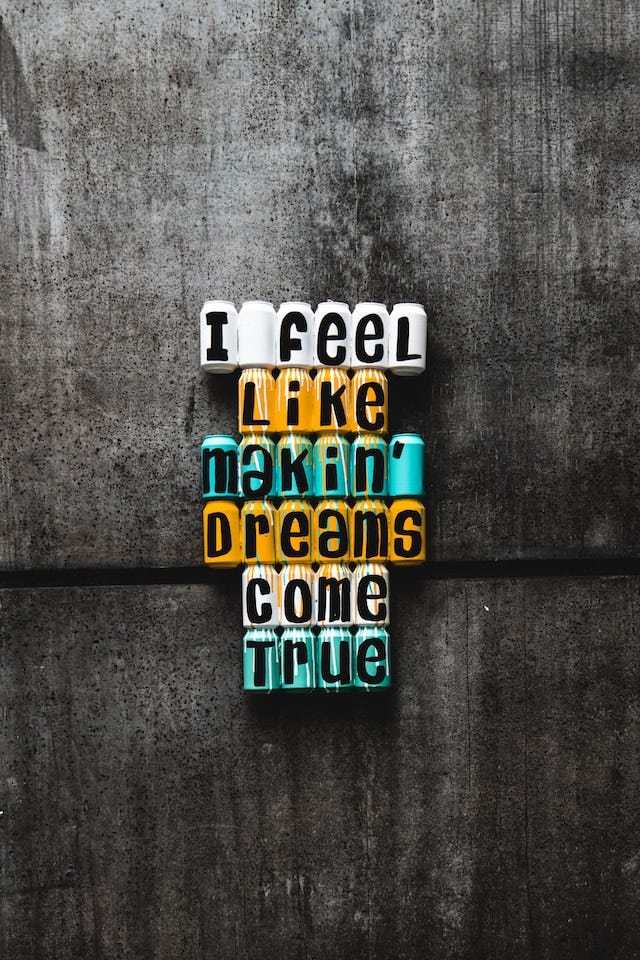

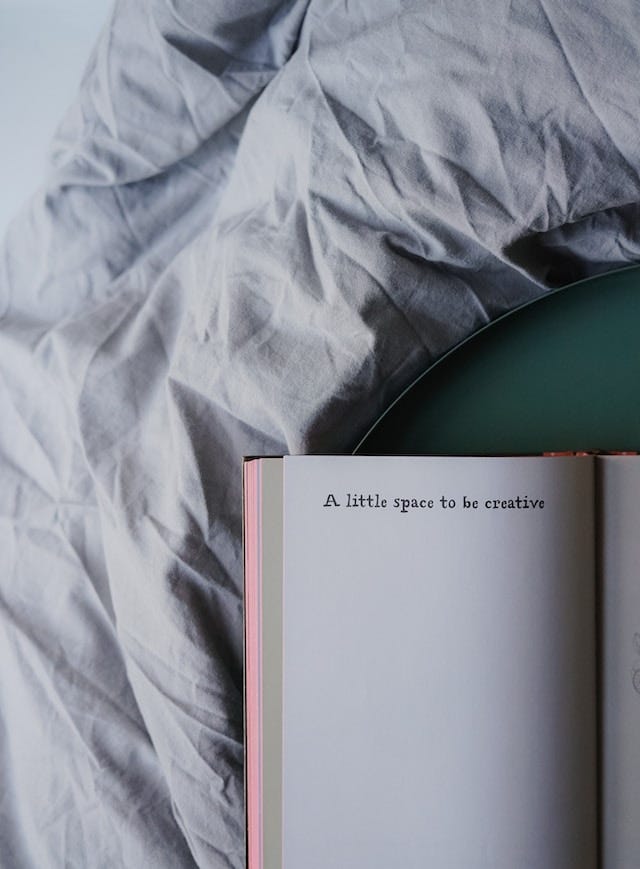
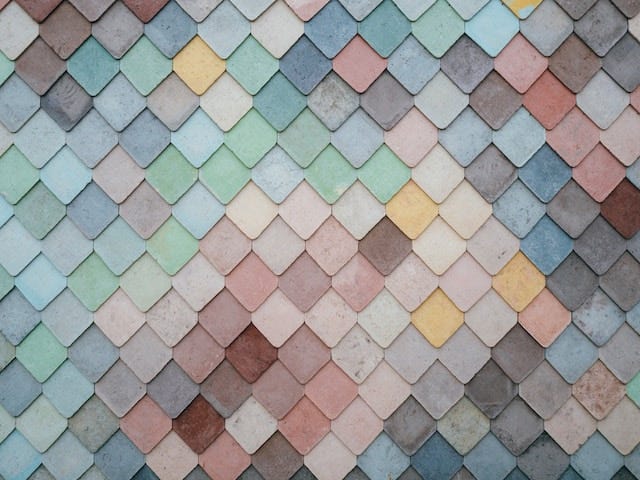

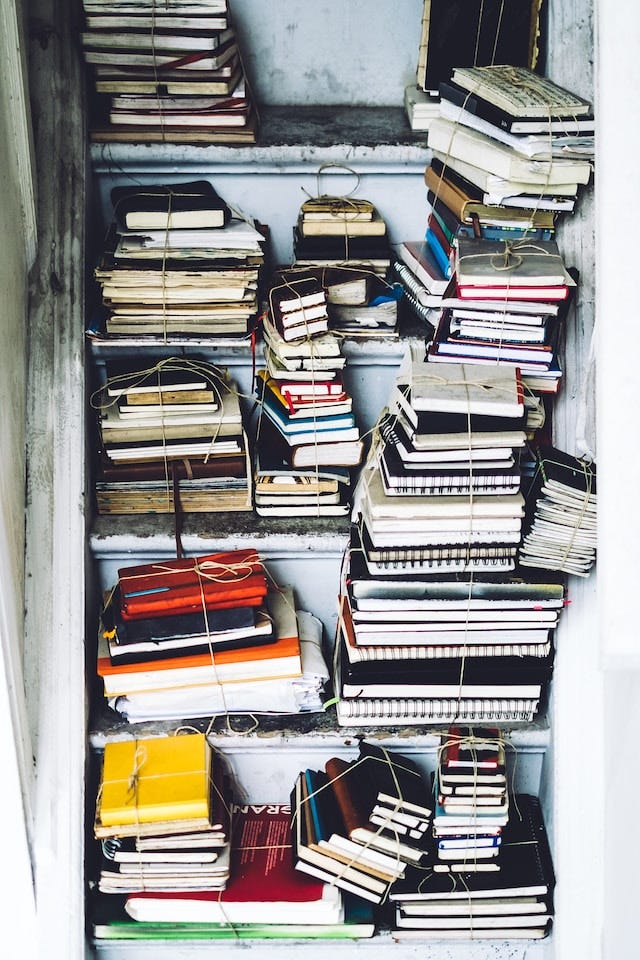

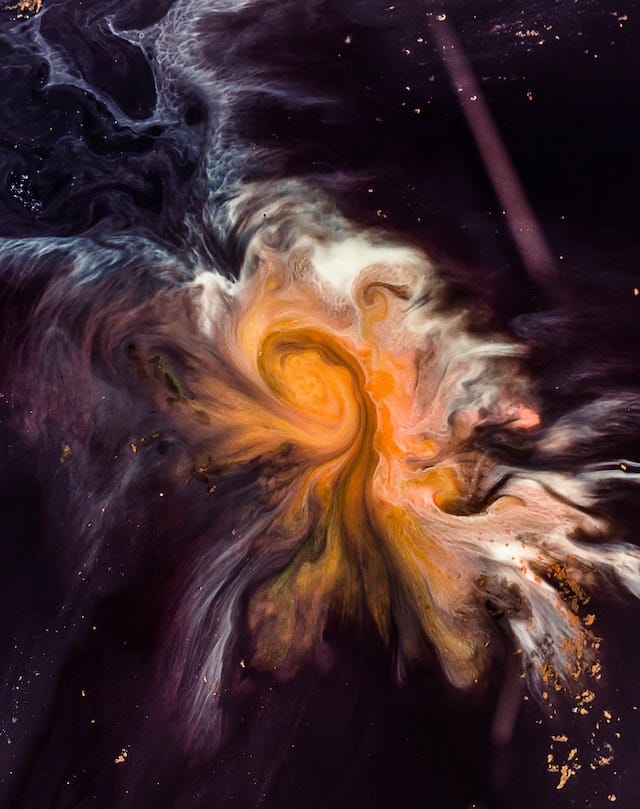

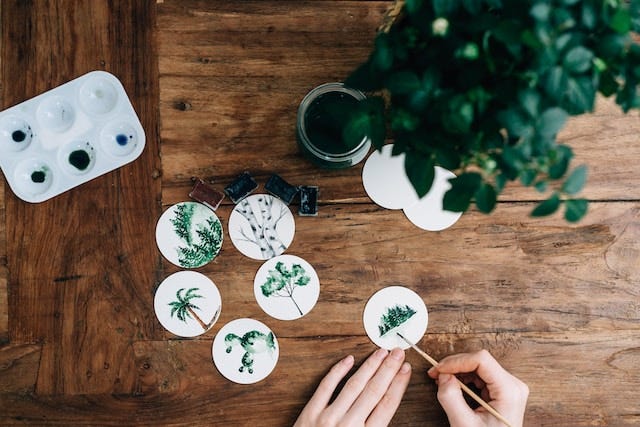
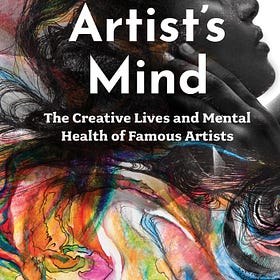
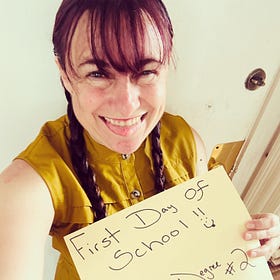
Thank you so much for this. And now you've got me thinking more about my own piece. :)
This is the most mega round up, wow, it is so generous and rich. You have featured a number of reads that I also loved recently and am grateful for a reminder of these, plus your insights which speak to me like my subconscious thoughts (thanks for putting words to them!) Also I look forward to checking out the posts that are not familiar to me. Thank you again!